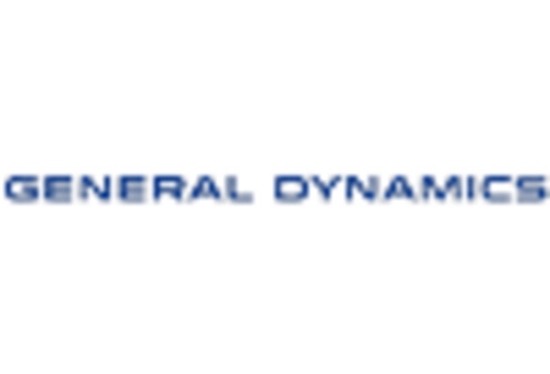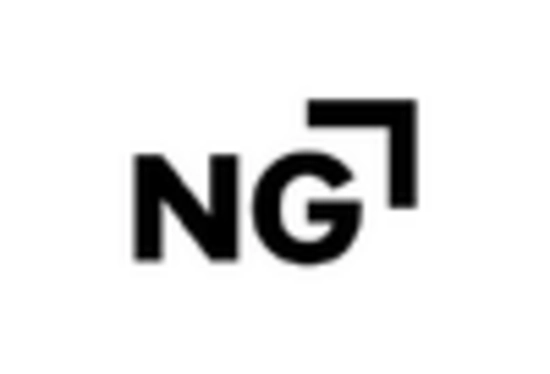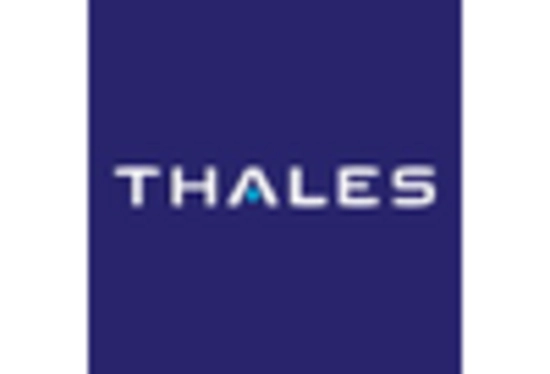Rising Security Threats
The Border Security System Market is experiencing heightened demand due to the increasing frequency and sophistication of security threats. Terrorism, human trafficking, and drug smuggling have become more prevalent, prompting governments to invest in advanced border security solutions. According to recent data, the market is projected to grow at a compound annual growth rate of approximately 7.5% over the next five years. This growth is driven by the necessity for enhanced surveillance and detection technologies, which are critical in mitigating risks associated with these threats. As nations grapple with the implications of these security challenges, the Border Security System Market is likely to see a surge in the adoption of innovative technologies such as biometric systems and automated surveillance drones.
Technological Integration
The integration of cutting-edge technologies into border security systems is a pivotal driver for the Border Security System Market. Innovations such as artificial intelligence, machine learning, and advanced analytics are transforming traditional security measures into more efficient and effective solutions. For instance, AI-powered surveillance systems can analyze vast amounts of data in real-time, significantly improving threat detection capabilities. The market is expected to witness a substantial increase in the adoption of these technologies, with estimates suggesting a growth rate of around 8% annually. This technological evolution not only enhances operational efficiency but also reduces the manpower required for border security operations, thereby optimizing resource allocation within the Border Security System Market.
Regulatory Compliance and Standards
The Border Security System Market is significantly influenced by the need for compliance with international security regulations and standards. Governments are increasingly mandated to adhere to stringent security protocols to ensure the safety of their borders. This regulatory landscape compels nations to invest in advanced border security solutions that meet these requirements. As a result, the market is projected to expand, with a focus on systems that can provide comprehensive reporting and monitoring capabilities. The emphasis on compliance is likely to drive innovation within the industry, as companies strive to develop solutions that not only meet regulatory standards but also enhance overall border security effectiveness.
Increased International Collaboration
The Border Security System Market is benefiting from enhanced international collaboration among nations to combat transnational crime and terrorism. Countries are recognizing the importance of sharing intelligence and resources to strengthen their border security measures. This collaborative approach is leading to joint initiatives and partnerships that aim to develop integrated border security systems. As nations work together, the demand for interoperable technologies and systems is expected to rise, fostering innovation within the market. The potential for shared funding and resources may also accelerate the development of advanced border security solutions, further propelling the growth of the Border Security System Market.
Public Awareness and Demand for Safety
Growing public awareness regarding safety and security issues is driving demand within the Border Security System Market. Citizens are increasingly concerned about the implications of border security on national safety, leading to heightened expectations for government action. This societal pressure is prompting governments to allocate more resources towards enhancing border security measures. As a result, the market is likely to see an uptick in investments aimed at improving infrastructure and technology. The emphasis on public safety is expected to catalyze the development of more sophisticated border security systems, ensuring that the Border Security System Market remains responsive to the evolving needs of society.

















Leave a Comment